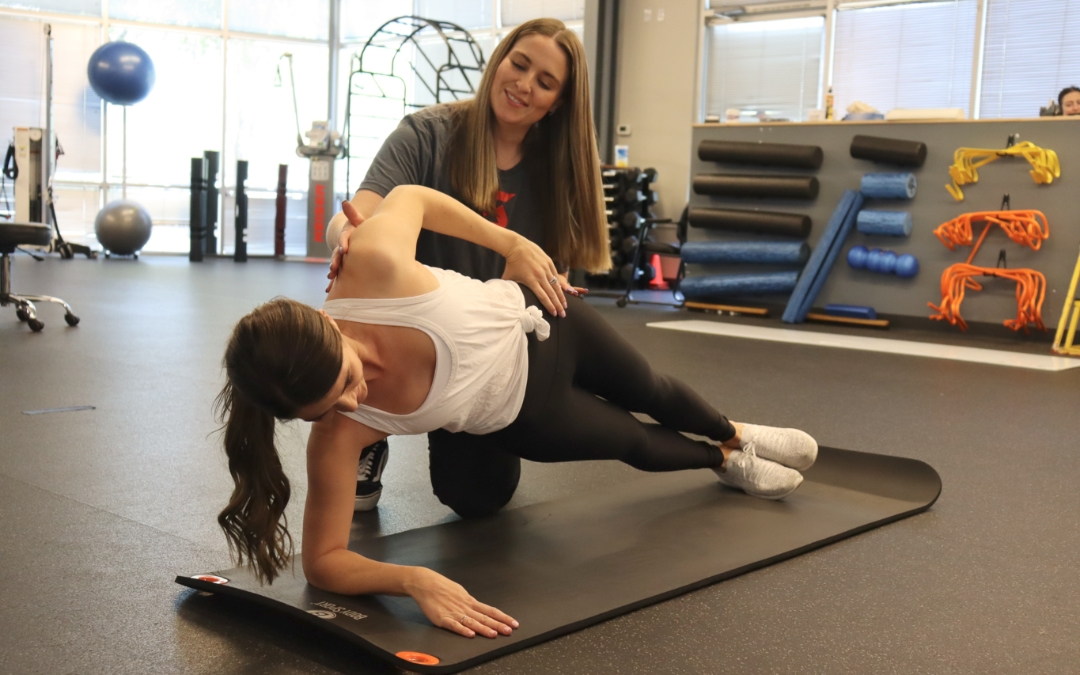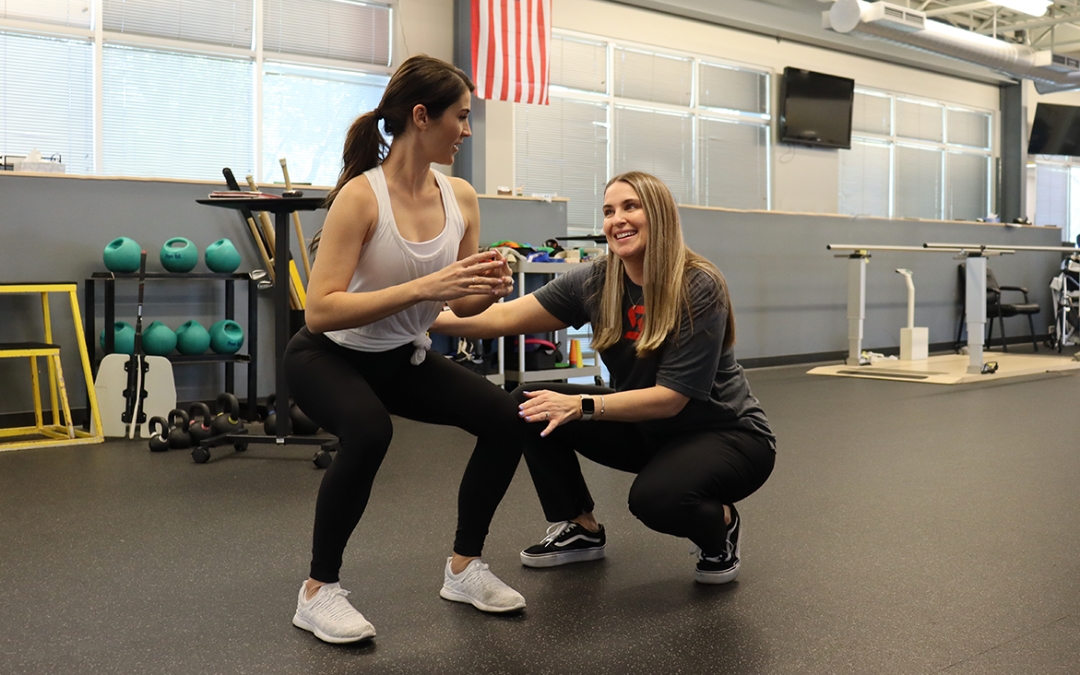By: Sara Gagliano, PT, DPT, CLT-UE
Recovering from childbirth takes time. Not only do your tissues have to heal, but you also have to regain strength and functionality in your muscles.
There are many factors that will impact your recovery time: if you gave birth vaginally or through a Cesarean section, if you experienced any tears to your tissue, or if there were any complications in the delivery process.
For non-complicated vaginal deliveries, your tissues typically heal within 6 weeks, however, returning to sport may take much longer than 6 weeks. Working closely with a pelvic floor physical therapist can help you safely and effectively return to the activities you love!
Exercising While Pregnant
The American College of Obstetricians and Gynecologists (ACOG) recommends at least 150 minutes of moderate exercise every week. Anecdotally, what I see in practice, is people who are more active during their pregnancy do have easier deliveries and recover better because they’re used to being active. Their body is conditioned, and they have a certain level of strength. People who are more active during their pregnancies generally have quicker recoveries, but there are always exceptions to the rules. Typically, I see those who remain active and have normal deliveries will most likely have better recoveries.
Read “Can You Exercise While Pregnant” to learn more!
Exercising After Birth
You shouldn’t return to activity until you are cleared by your doctor, and, in non-complicated deliveries, this typically occurs at 6 weeks.
If you work with a pelvic floor specialist, you might be able to incorporate light movement at weeks 3-4, as long as you do not have any abdominal pain, abdominal pressure, or bleeding. These activities may look like gentle core activation, postural exercises, lifting techniques for your baby, and more. If you had a C-section, you will likely have limited activity until 6 weeks.
The time for you to return to more strenuous activity can vary. While you may be cleared at 6 weeks, it may take a little longer before you can get back to doing those activities, like running and jumping.

Return to Sport Post-Partum
Similar to how the 6 week varies, the amount of time it takes to return to your sport will vary. Working with a pelvic floor specialist is so important to increase your functionality post-partum. After 6 weeks, we begin working with you to strengthen your pelvic floor muscles and then integrate that strength into functional movement. Our goal is to help your pelvic floor work with the core muscles, the hips, the glutes, and more. We take the early work of core activation and postural exercises and progress it into upright exercise- like squats and lunges. As your core and pelvic floor grow stronger and more stabilized, we add resistance and progress to light jumping.
Focusing on the Pelvic Floor
Your pelvic floor connects, stabilizes, and transmits force between the upper and lower bodies. This group of muscles, after childbirth, can have dysfunction and either be too tight or too weak. If they are too tight, it won’t be able to function in a reactionary way to support the pelvis, core, and urinary function. If it is too weak, it will not be able to contract when you need support with impact activity or lifting.
A pelvic floor physical therapist can help you ensure your pelvic floor is functioning properly after birth and support you in adding functional movement that will help you return to your sport. We take a full body, holistic approach to make sure everything that has been affected by birth is properly addressed and doesn’t become an issue down the road or limit your performance.
If you are pregnant or post-partum and looking to safely return to sport, schedule an appointment with a Spooner pelvic health therapist today!

